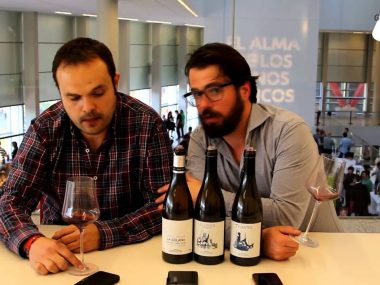Sparkling wines, also called sparkling or semi-sparkling wines, are special, fresh, entertaining and sparkling wines. They are defined as bubbly wines that increase rapidly within the glass.
They are wines with diluted gas, this gas is achieved by forming a second fermentation inside the closed bottle or in closed tanks. The carbon dioxide that is created cannot leave, and is diluted with the liquid. This second fermentation can be completed by adding sugar.
These wines have become very popular over the years, and are used for special occasions and festivities. Sparkling wines made in Spain are called cavas.
How are sparkling wines drunk?
Sparkling wines are very distinguished as an aperitif accompaniment due to their acidity, while they blend very well with fish or seafood. Due to its bubbling and extrovert characteristics, and even the good sound of the corkage, it establishes a strange sensation of joy, happiness and good wishes.
Sparkling wines are processed from many types of grapes, however, these are the most used: Chardonnay, Pinot Noir and Pinot Meunier.
Most of the sparkling wines are made from a mixture of Chardonnay (white grape) and Pinot Noir (red grape with white pulp) (60% / 40%). The champagnes Blanc de Blanc (100%) and Chardonnay. The champagne Blanc de Noir (100%) with Pinot Noir or red grapes.
There is a possible rule, that for your enjoyment this type of wine should be served in flute glass, which in fact are of modern creation, made to preserve the foams with great elegance.
The sweetness of the wine is a determining factor when it comes to sparkling wines. The degree of sweetness indicates the lifestyle.
Classification by degree of sweetness
Extra Brut. This type of sparkling wine is perhaps the most suitable. It has 0.6 g/l of residual sugar.
Brut. It is one of the most popular because this wine is dry with a touch of sweetness. The wine maker slows down the progress of fermentation, before the yeast absorbs the sugar. It has 0.12 g/l.
Brut nature. It indicates that the yeast consumed almost all the sugar and left only 0.3 g/l of residual sugar in the wine.
Extra dry. This type of wine has a small increase in sweetness. It is the right sparkling wine for people who do not have a preference for sweetness. And it only has 12.17 g/l.
Demi-sec. These options are for sweet lovers, and for those who are looking for a wine to accompany their dessert. With 17.32 g/l.
Dry. These wines are excellent for the company of food (salty). With 17.32 g/l.
Doux. Ideal for lovers of sweetness. This type of wine is special for a hot day in the summer. It has 50+ g/l.
Types of sparkling wines
By the traditional method, they are produced according to the standards used in the areas originating from French champagne or equivalent, from where the first sparkling wines come. It consists in exposing the already bottled wine to a second fermentation to cause the gas.
The granvas or charmat, also called large containers. With this elaboration a similar process is carried out, it is done in the second fermentation of the wine. Later, when it is aerated, it is bottled. The result is optimal.
The aerated wine is introduced directly to the gas, in an industrial way. The foams achieved are thicker and less formed than in the two previous methods.






